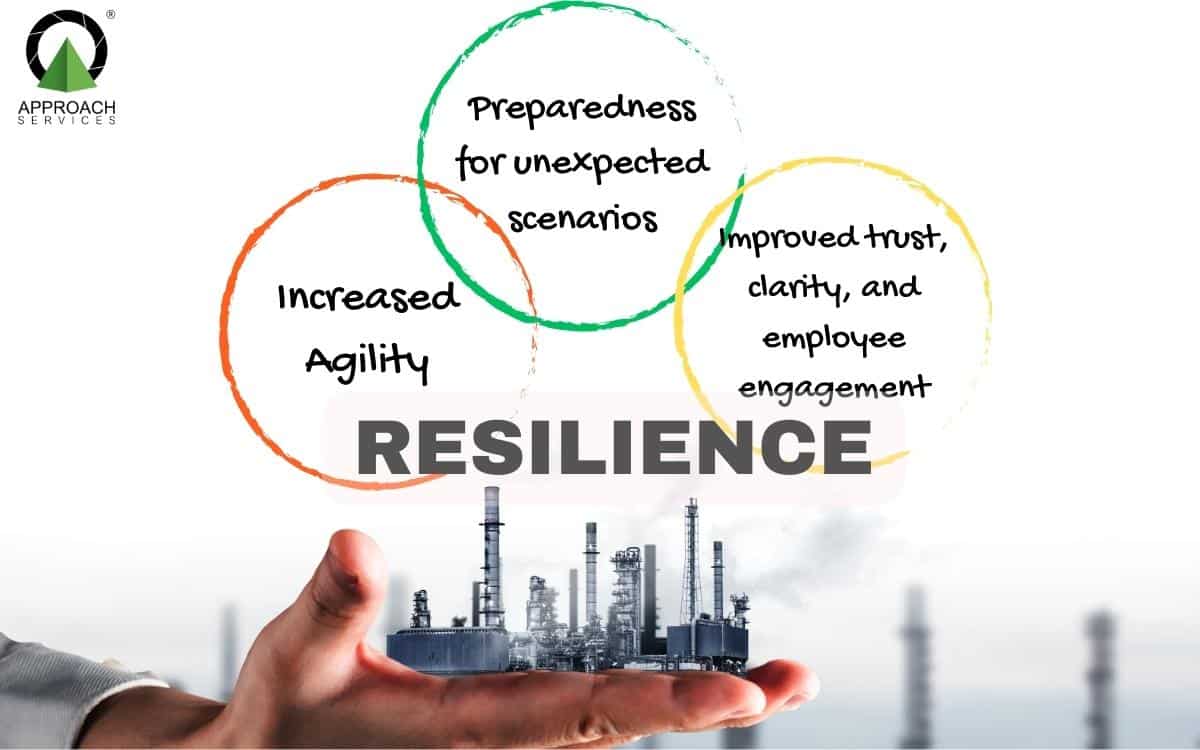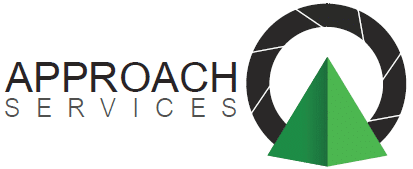Reading time: 5 mins
Why building organisational resilience is key for senior people and culture leaders in 2023
As businesses in the Energy and Utilities industry increasingly respond to changing consumer demands, technology trends, and regulations, Change Resilience has become a critical skill for senior people and culture leaders. But what is Change Resilience – and why is it so important in 2023?
In this article, we'll explore the power of Change Resilience. We'll discuss why it is essential for senior people and culture leaders in 2023 and how it can help your business stay agile and competitive in the face of ever-evolving conditions and major disruption. We'll also provide tips on how to build business Change Resilience within your organisation so that you can take advantage of opportunities for growth and progress.
By the end of this article, you'll have a better understanding of how Business Resilience can help your business grow in 2023. So, let's get started!
Contents
- How does building resilience help a business?
- Change Resilience is an organisational capability
- Why do executives and business leaders care about change resilience?
- Does your business struggle to manage multiple, seemingly unrelated change projects?
- Why resiliency skills are key for senior leaders in 2023?
- 7 strategic steps you can take to successfully bridge the resiliency capability gap
How does building resilience help a business?
The Energy and Utilities sector is increasingly focusing on NetZero-goals to reduce emissions, waste and energy consumption. This has led to various changes within the industry – from increased investment in renewable energy sources to new regulations governing the use of fossil fuels. As businesses strive to meet customer and legislative demands, they worry about not having the capabilities, capacity or resources to manage multiple, seemingly unrelated projects. Human Resources leaders are concerned about "change fatigue", higher turnover and loss of talent. Building change resilience is a vital part of our easy-to-follow framework that will enable you to navigate your project and keep stakeholders engaged.
Change Resilience is an organisational capability
Change Resilience is an organisation's ability to respond effectively and quickly to change while maintaining its core values, mission, and purpose. It involves developing strategies that allow a business to remain agile and competitive in the face of changing conditions and crises – while also building trust with customers, employees, stakeholders, team leaders and other parties. Organisational Resilience is not just a mental approach. It involves having the right business model, company culture, structures, and processes in place to support transformational readiness and long-term success.
Why executives and business leaders care about change resilience
Change resilience is an essential part of organisational change readiness. It helps businesses prepare for the execution phase of transformations, stay agile in the face of regulatory and technology changes, and foster trust, clarity, and employee engagement — all critical elements of a successful transformation.
Speaking to numerous Senior Managers in People and Culture, we found the primary benefits to be:
1. Increased agility:
Quickly responding to changes and taking advantage of new opportunities is key in the energy and utilities industries. Change resilience helps organisations stay ahead of the curve, enabling them to comply with ever-changing regulations and technology trends.
2. Preparedness for unexpected scenarios:
Resilience helps organisations prepare beforehand for any issues they may encounter along the way. This helps businesses remain competitive in a rapidly changing environment and respond quickly and effectively to any unforeseen challenges.
The speed of change can be overwhelming and leave you feeling helpless
It's easy to feel like a victim when things get out of control. Therefore, you need fast and effective ways to manage stress during transitions. Through the Resilient Change Training, you will learn how to reframe adverse situations quickly and seize hidden opportunities during transformations.

3. Improved trust, clarity, and employee engagement:
Resilience ensures that employees feel secure in their roles and motivated to perform better. It encourages trust, clarity, and engagement among team members so they can transition much faster.
Change resilience is an essential skill for any business that needs to manage complex or multiple projects. With the proper framework, strategy, structures and skills in place, businesses can ensure their transitions are efficient, effective and successful. Change resilience enables leaders to overcome resistance, maintain stakeholder engagement and ultimately drive desired outcomes. It reduces risk while creating a culture of trust and innovation that helps the business reach its goals.
By focusing on building change readiness within your organisation, you can improve efficiency in leading and managing complex transitions - transforming your business into a resilient powerhouse in today's ever-changing environment.
Does your business struggle to manage multiple, seemingly unrelated change projects?
When businesses lack the framework, structures and skills to be resilient, they are more likely to encounter stakeholder disruption and resistance.
ViEnergy was a well-established, global business operating for over four decades. Despite the company's longevity, it struggled to manage multiple complex projects and transition into new business models.
The change process was difficult, and the company struggled with stakeholder engagement and employee turnover. Employees lacked clarity about their sponsorship and championing responsibilities, leading to a period of confusion and disruption.
By engaging Approach Services, a change management solutions provider in Australia, the company was able to gain access to experienced change experts who could liaise between the PMO, the management team and the stakeholders supporting them through the transition process. The team provided tailored strategies and educational resources such as surveys, digital learning and toolkits that ensured employees understood the changes ahead. The training and coaching build change resilience in the business from the top all the way to the frontline.
By understanding the power of change resilience, ViEnergy, now a resilient business, was able to make real progress towards establishing a culture of trust and innovation. Over time this has enabled them to take advantage of growth opportunities and improved employee engagement levels that have helped reduce turnover.
Resiliency skills are key for senior leaders in 2023
2023 will be a pivotal year for businesses wanting to maintain a competitive advantage. To succeed, senior people and culture leaders must be prepared with the right strategies and tools to manage the changes they will face.
According to the latest PWC 26th CEO Survey, 86% of CEOs want to upskill their workforce in 2023. In addition, 56% of CEOs think that Change Management will be the greatest challenge, while 72% think workforce management presents the greatest challenge in 2023. With these challenges on the horizon, the most important skill for businesses is change resilience.
As a business leader, there are 7 strategic steps you can take to successfully bridge the resiliency capability gap. Here is what you need to do:
For example, enrolling in resilient change leader training gives you confidence so that when business transitions come up, you're ready to handle them. With the right mix of theoretical concepts with practical tools and techniques, you'll be prepared to weather any storm that comes your way.
The speed of change can be overwhelming and leave you feeling helpless
It's easy to feel like a victim when things get out of control. Therefore, you need fast and effective ways to manage stress during transitions. Through the Resilient Change Training, you will learn how to reframe adverse situations quickly and seize hidden opportunities during transformations.

5
6
7
Implement regular coaching sessions with learners to identify potential blind spots when responding to changes and improve communication and collaboration across teams and silos.
Foster an environment of trust by encouraging open dialogue between the senior management and other involved stakeholders during transition or transformation initiatives to ensure everyone is on board with new ways of working.
Monitor progress regularly to track whether desired outcomes are being achieved through your efforts towards improving resiliency capabilities within your organisation.
This year, building resilience is a priority for most companies and businesses wanting to compete for talent and pioneering positions in the Energy transition. ViEnergy, a company that was struggling with employee engagement and turnover, found success by engaging us to help them bridge the change capability gap. This trusted partnership enabled them to take advantage of growth opportunities, improved employee engagement and reduced turnover.
No matter the solution, senior people and culture leaders must take simple steps toward creating organisational change capabilities and resilience in the next 12 months.
Happy Change!

Eva is one of the masterminds behind Approach Services' blog and The 6 Cents of Change. She is an innovator, trainer and change manager. Her work has been published in the Schmalenbach Journal of Business Research. In her spare time, she enjoys camping with her two little boys and permaculture gardening.
Subscribe to our monthly newsletter The 6 Cents of Change and follow us on LinkedIn to learn more!








